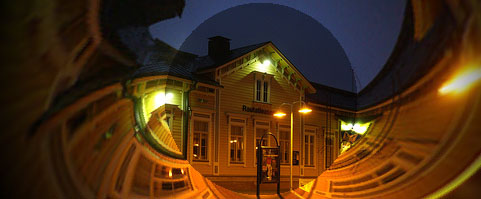Hydra is the codename for the Adobe prerelease of the AIF Toolkit. In a nutshell, it’s a language-based image manipulation tool, the output of which can be used in After Effects and future versions of Flash (and possibly Photoshop as well). Joa Ebert is one of the few developers at Adobe Labs currently experimenting with the potential of Hydra, and his presentation was all about the vast potential Hydra offers, and the possibilities that lie ahead for it’s uses.
First of all a bit of background: a pixel is not a square! It is a piece of data whose values are interpolated when drawn to screen, and can carry various types of information like RGB, CMYK etc. Pixels shaders are programs to handle pixel interpolation (among other things) and are written in a shader language that is executed on the graphics hardware. Since this is executed on the GPU, it saves processing time on the CPU.
Hydra is a shader language very similar in syntax to GLSL – the shader language used for OpenGL shaders. The language is limited, strict and type-safe, so is a little harder than actionscript initially. Code compiled with the AIF toolkit will run in the preview window, but there is currently no version of the Flash player available to test Hydra code. It is also worth mentioning that there is currently limited language support for Hydra filters running in the alpha versions of Flash 10 (no loops, no if then else), but Adobe may be rectifying this.
Joa brought up some interesting theoretical scenarios for exploiting Hydra’s speed for serious performance gains in the next version of the Flash Player (most of the examples shown running in AIF were at over 1000 fps!) – but only if Adobe allow decent access to the hydra platform when running. Things like realtime physics, audio processing, 3d graphics etc. could all take advantage of the acceleration it would give, so if your interested in seeing such things in Flash 10, get on down to the Hydra Forum and make your feelings known!
More information on what is currently possible with Hydra can be seen by visiting Joa’s blog, or the Hydra Gallery at Adobe Labs
